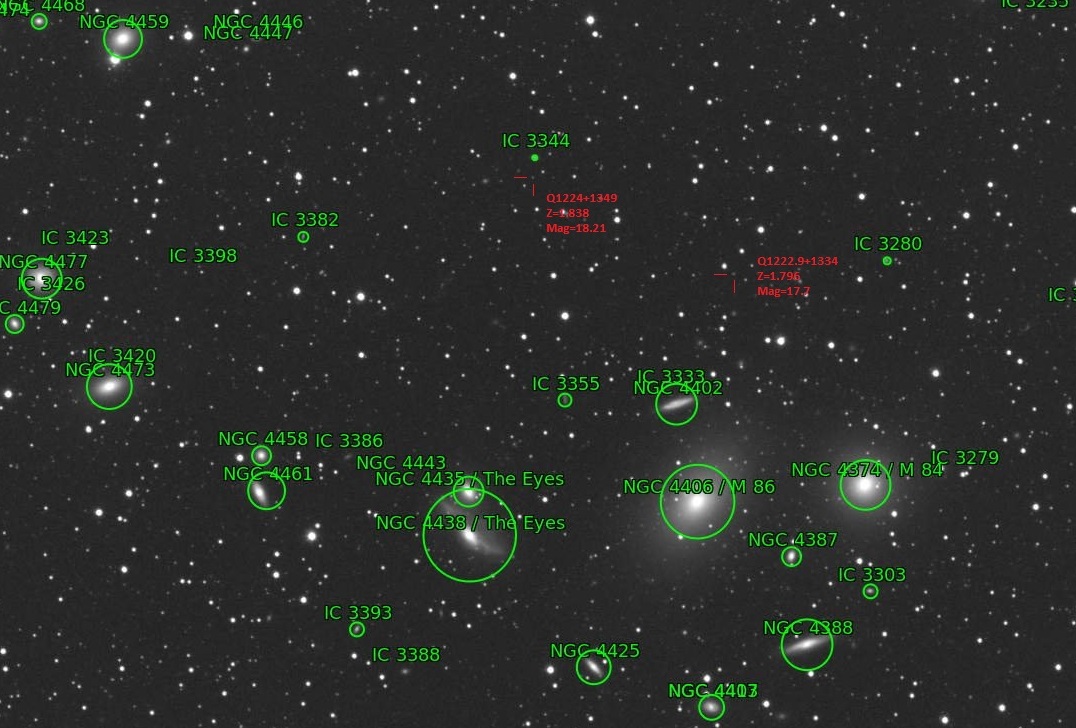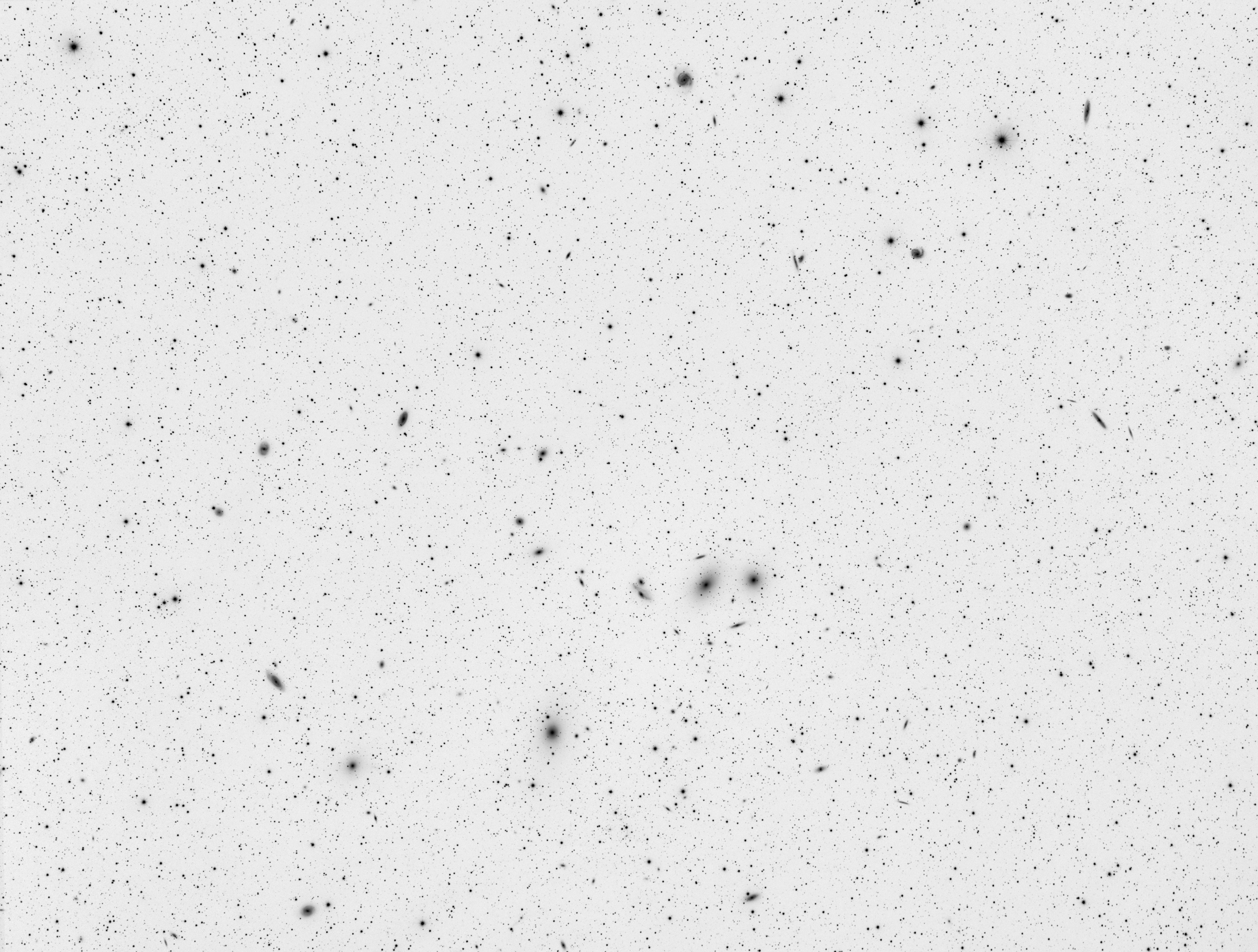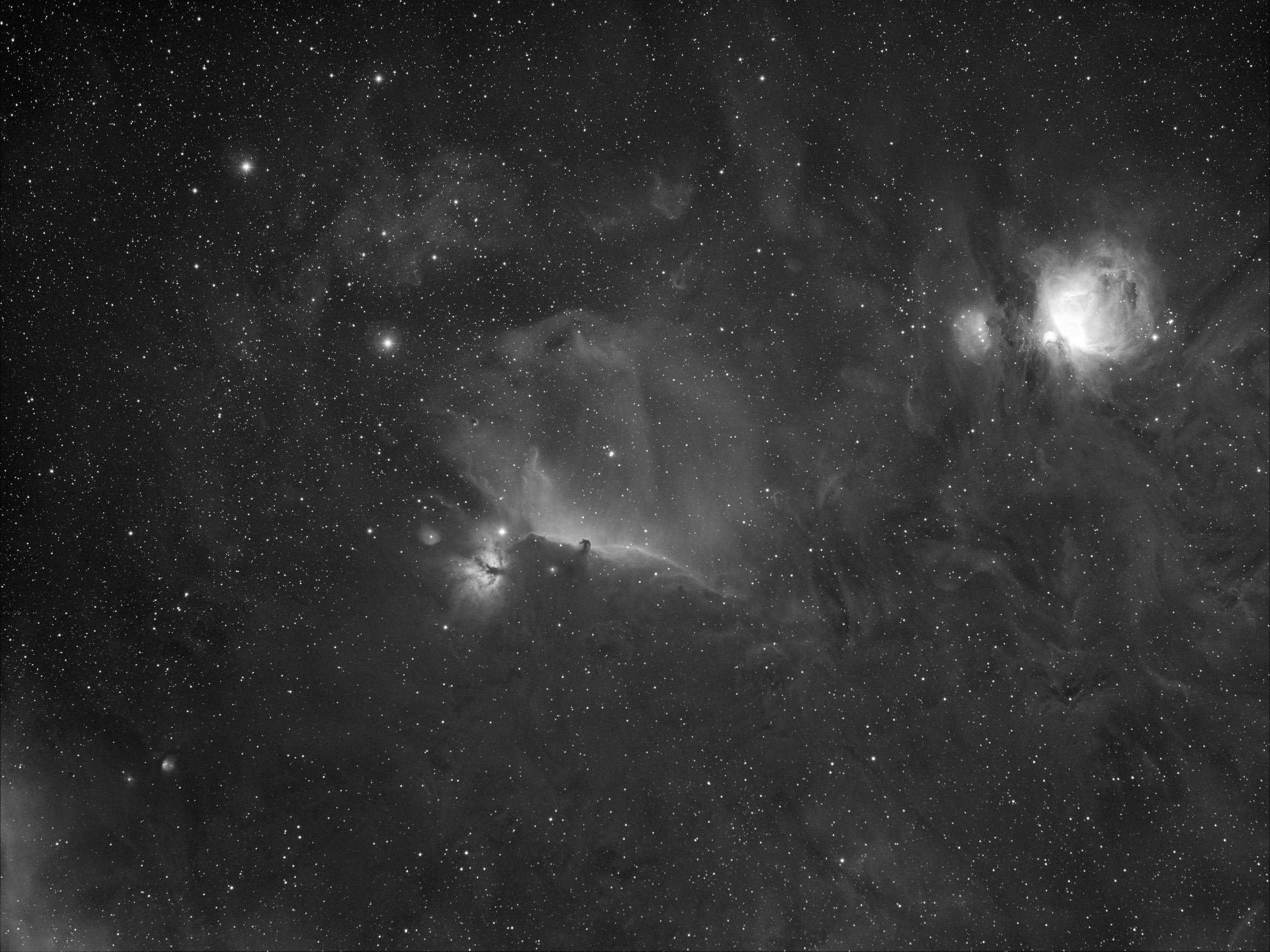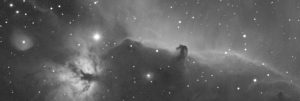4h40 exposure (L:56x300s)
Acquired on the 28th of February 2019 with Samyang 135mm

QSO1224+1349 et QSO1222.9+1334 – 2 Quasars located in the north of Markarian chain. Samyang 135mm F/2 at F/2.8, QHY163m gain=100
This article suggests a method to identify Quasars objects on personal photos. This method, very simple, uses Aladin Desktop software from Strasbourg astronomical Data Center.



